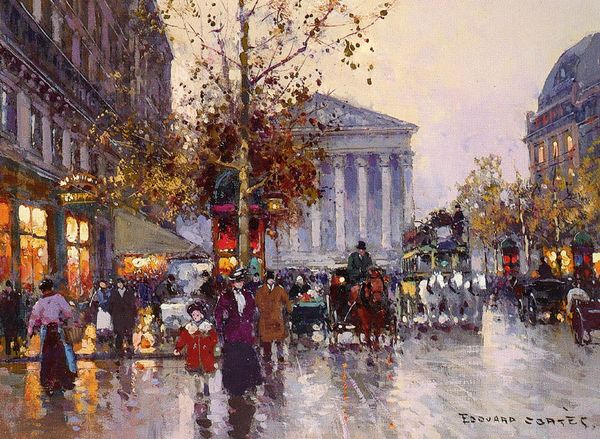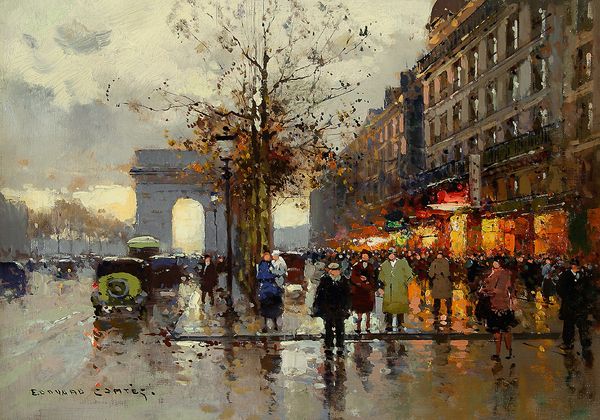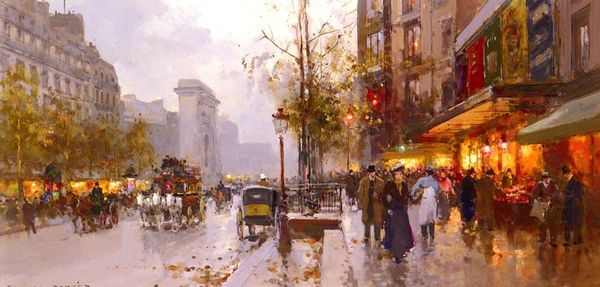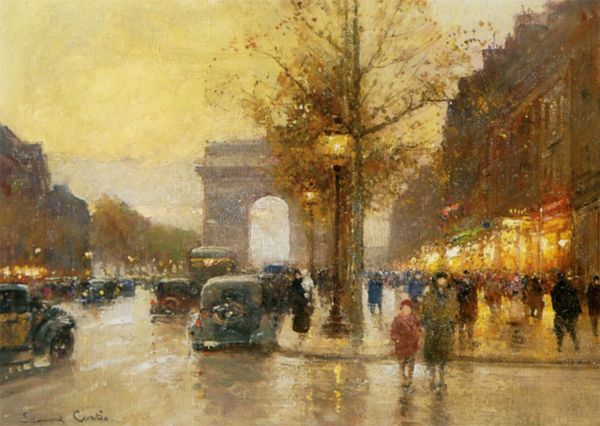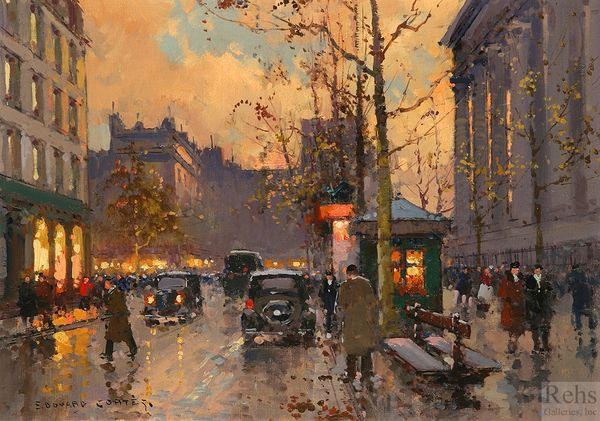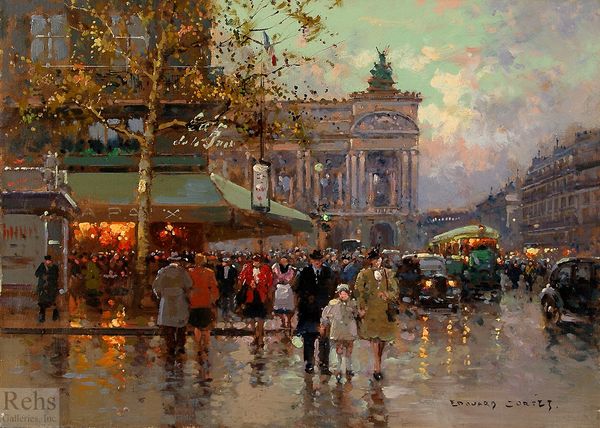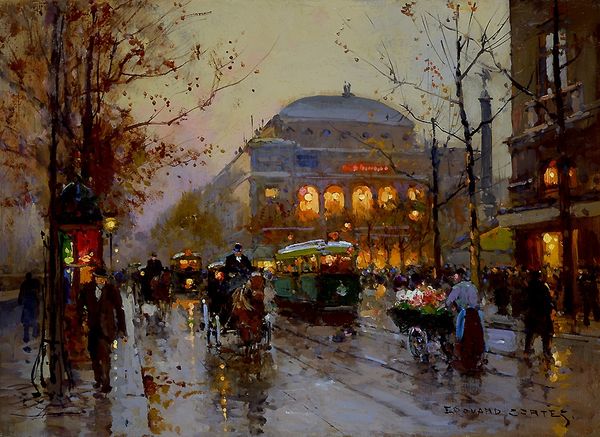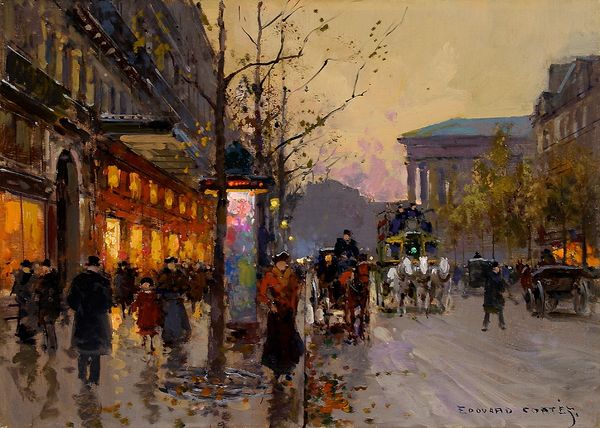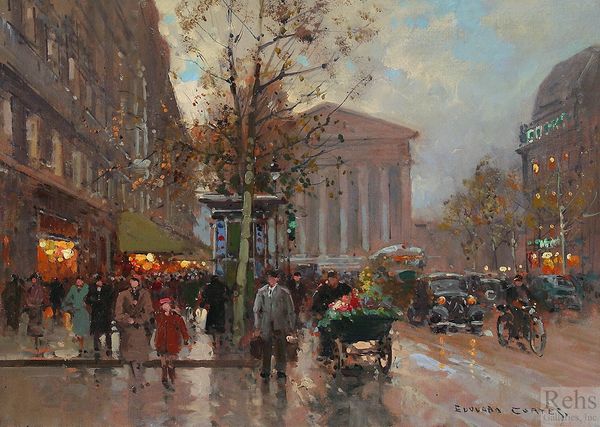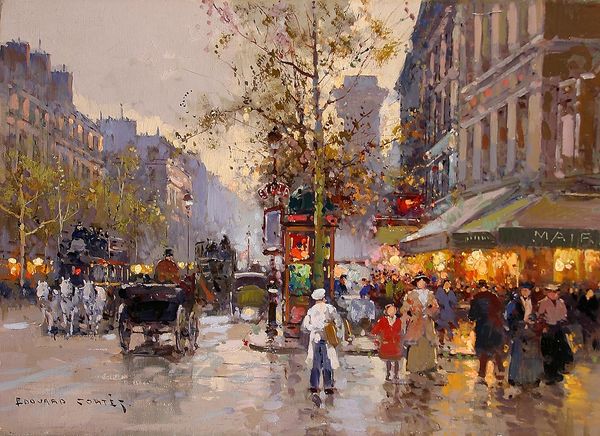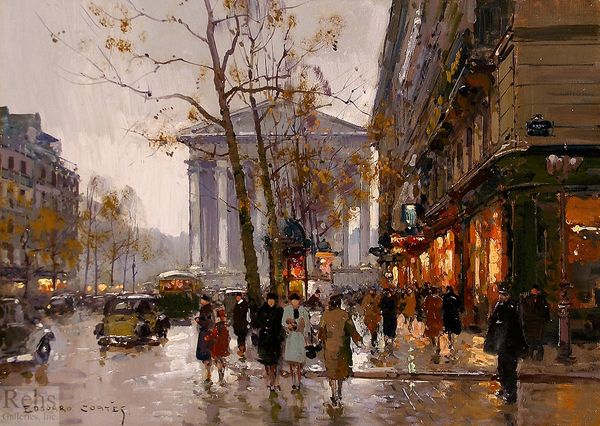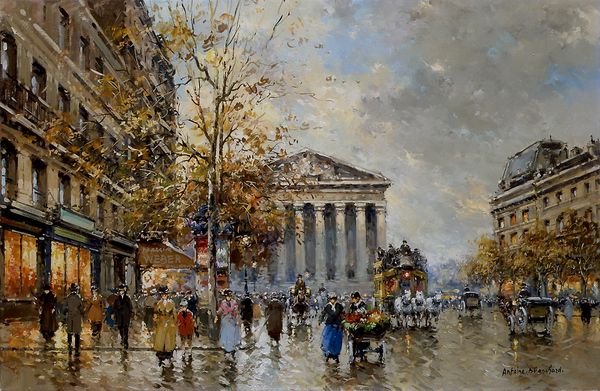
painting, oil-paint
#
cityscape
#
painting
#
oil-paint
#
landscape
#
oil painting
#
cityscape
#
genre-painting
#
post-impressionism
#
street
#
building
Copyright: Edouard Cortes,Fair Use
Curator: We’re looking at "Rue Royale Madeleine," an oil painting, by Édouard Cortès. It evokes a classic Parisian cityscape. Editor: My first thought is: What a wonderful sense of fleeting time and reflected light. It feels like the gloaming hour, capturing the buzz and bustle of city life just as the day fades. Curator: Yes, Cortès specialized in these city scenes, often returning to the same locations repeatedly, capturing them under different weather and light conditions. It’s intriguing to consider the industrial processes behind producing paint at scale, facilitating an artist’s capacity to repeat and iterate like this, documenting social life so faithfully. The rise of industrial manufacturing democratized art. Editor: Indeed. Notice the careful positioning of landmarks along the Royale – the church’s neoclassical columns puncturing through the scene—they’re not merely background architecture. Symbolically, the solid facade contrasts nicely with the stream of figures. Cortès juxtaposes symbols of steadfast, institutional power with those everyday, ephemeral gestures in society. Curator: The visible brushstrokes reveal the painting's constructed nature. The canvas becomes a site of material transaction between the painter, his tools, and the subject he renders—each dab of paint is itself labor. Consider, also, the social context of the era, how increased urbanization and industrialization directly informed the painter's focus, as well as the art market seeking to depict an idealized vision of city living. Editor: Look closer—he contrasts modern modes of transport and dress with that older, classicized backdrop. Doesn't it remind you of the ancient Roman practice of placing equestrian statues or triumphal arches in urban settings? There is such enduring visual appeal for framing modern progress within older idealized forms of governance. Curator: A keen observation! Understanding that these paints weren't hand-ground by apprentices is crucial. Industrial pigment production reshaped artistic practices and how artists like Cortès depicted the burgeoning modern experience through commercial venues, consumption and labor. Editor: Absolutely. As viewers, our own memories and cultural touchstones—film, photography, collective histories—shape how we encounter this representation of Paris today. Cortès gives us not just a painting but a tableau ripe with nostalgia. Curator: Precisely, the convergence of artistic labor and materials of mass-produced commodities to record what will, inevitably, be historical narratives in the making. Editor: These enduring visuals help us remember, to revere, and rethink, I might add!
Comments
No comments
Be the first to comment and join the conversation on the ultimate creative platform.
